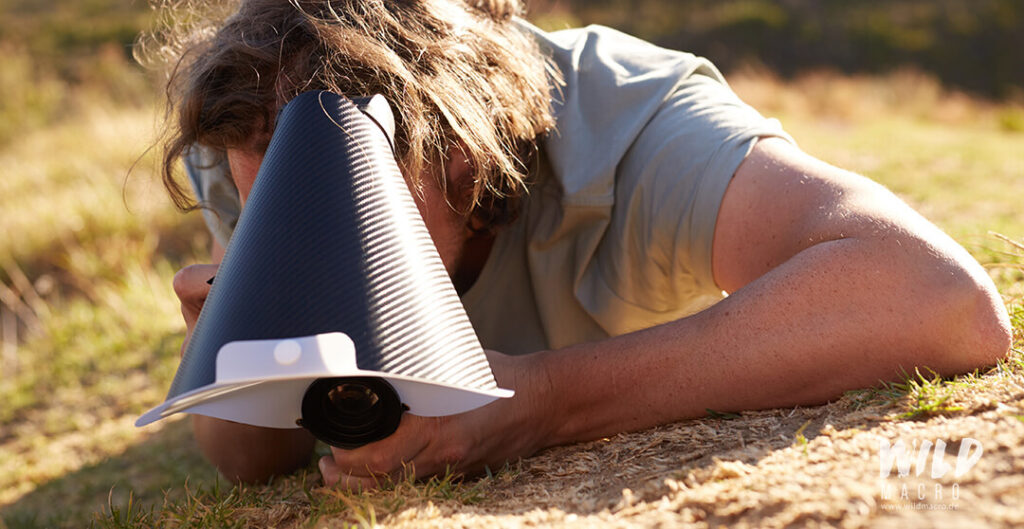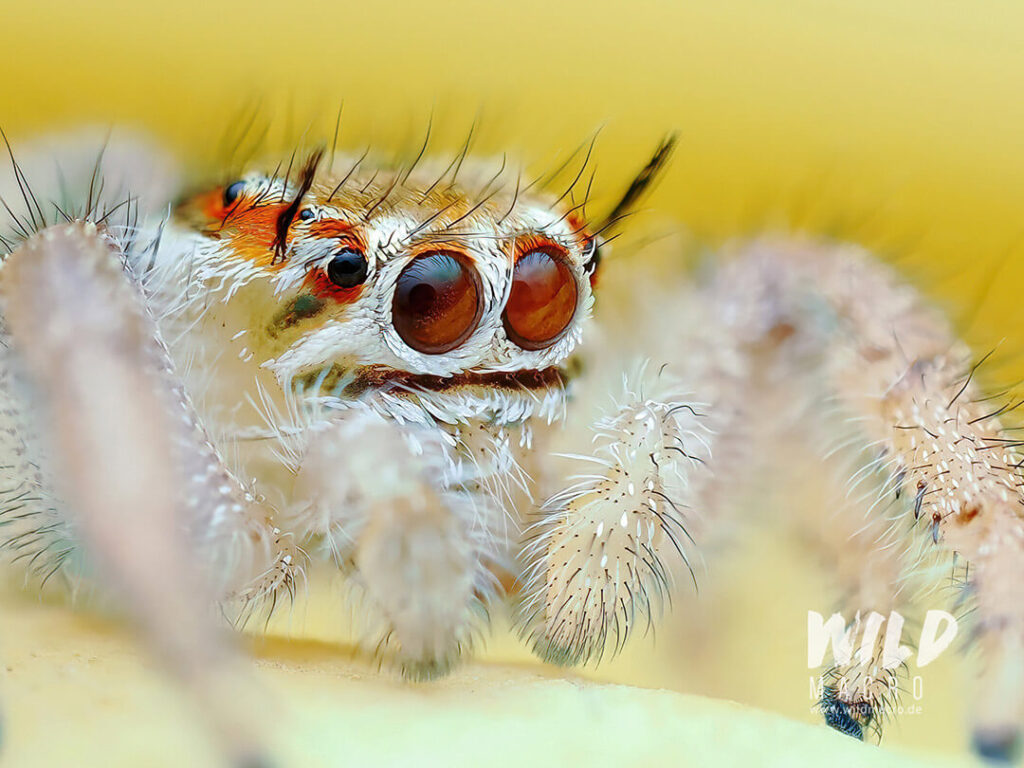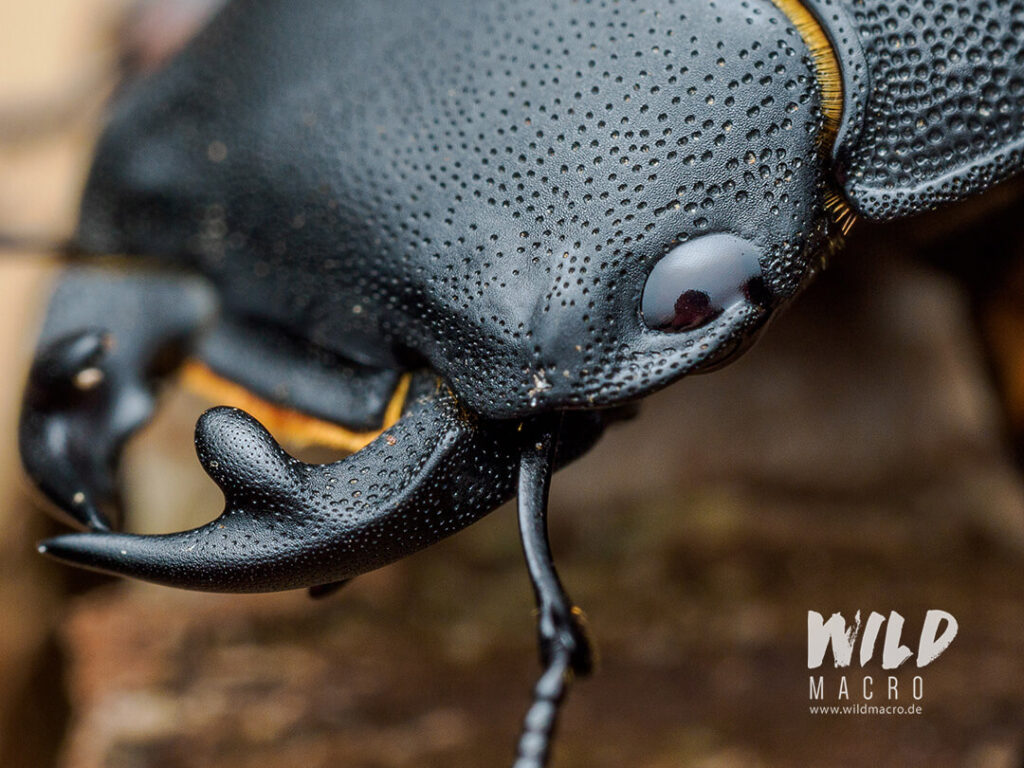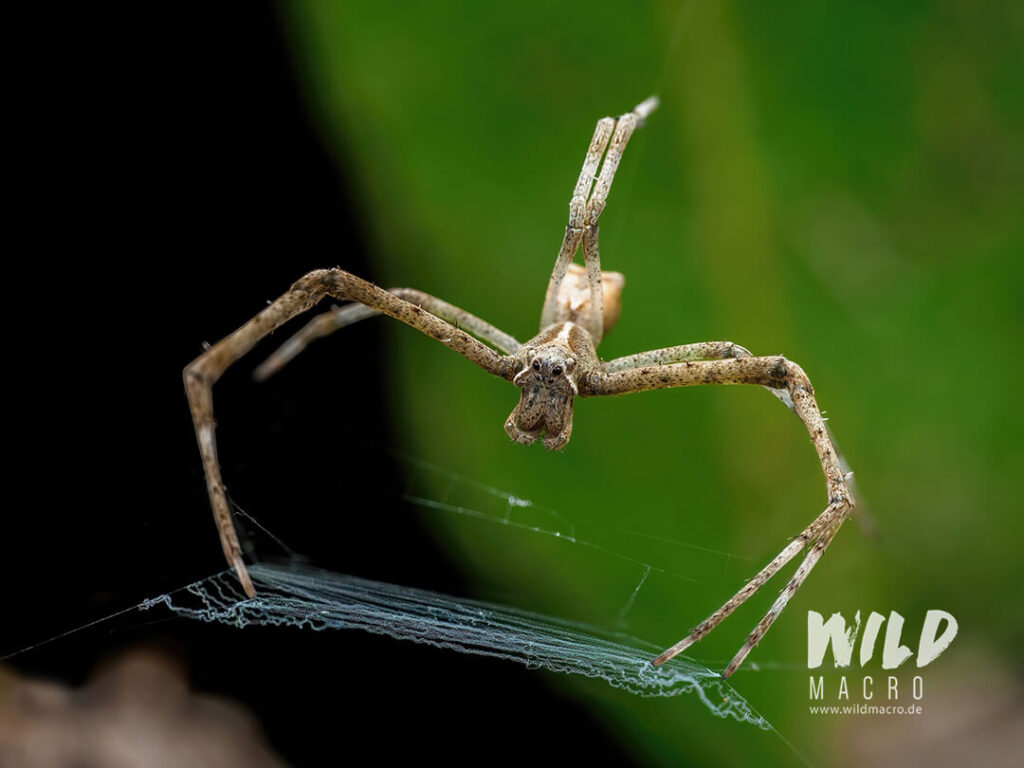23 Jun Does using a flash hurt insect and spider eyes in macro photography?

I have been part of countless discussions about potential damage to insects´ and spiders´ eyes from using a flash for macro photography.
Rarely have I heard arguments that are based on facts, let alone been presented with scientific research.
It is easy to deduce potential effects from an impression or experience we, as human beings, have when looking right into a full power flash directly and then transfer this in relation to a much smaller subject like an insect or spider.
However this leaves out some substancial facts, which lead me to my belief, that using flash for macro photography is not hurting my tiny subjects´eyes.
Whatever I photograph, I always keep a strong set of macro photography ethics in mind and do not take this topic lightly.
Fellow macro photographer Pete Burford has recently shared a funny reel on IG, which motivated to write this blog article: watch here.
Flash intensity used in macro photography
Aside from providing better lighting, using a flash in macro photography has another benefit: short flash burn times can visually freeze motion and result in perfectly sharp photos, even though the subject may be moving.
To achieve this effect, the flash power will be as low as possible, as the flash burns faster, the lower the power per flash is set.
A full force flash at 1/1 power will be way to bright for optimal exposure in most use cases, so the flash power will be dialed down most of the time.
Subjects, like insects and spiders, will rarely be hit by a flash at full power.
During night time (when photographing all of the nocturnal species), the flash power setting will always be relatively low, as the flash does not have to compete with the sun and is the only source of light.

For best results, in macro photography a flash diffuser is commonly used, so the direct flash is softened and the emitted light is spread.
Insect and Spider eyes and the sun
The main fact, that makes be believe that flash does actually not blind insects and spiders, is the following: these creatures have no eye lids.
Their eyes are always exposed to the sun(light) during daytime.
Other than us, they can not close their eyes and are fully exposed to the direct sunlight in its full intensity.
Imagine the midday sun high up, burning down on you, and you would have to stare right into it for hours…
The light emitted from the flash is barely noticeably in comparison to the sun.
I have strong doubts on the a potential harmful effect of flash (on the majority of macro subjects).
They notice it, of course – that´s a fact and out of question.
It may bother them, one species more than the other – but when it comes to the claim, that the flash blinds the subjects, I can not follow that argumentation.
Still, insect eyes are light-sensitive obviously, but since they are mobile, they will just turn or move and fly away once you take a photo with flash.
It is not that they would have to sit still and endure a series of flashes while you take your focus stack, for example.
On the other hand, I usually take this as an indicator: when an animal reacts to the flash, turns and/or moves away, I will not hunt it down for more shots.
Light sensitivity of nocturnal species
There is one fascinating story to come across, when researching the topic.
As nocturnal predatory species of spiders need to have appropriate vision during the night, their retina is usually highly light sensitive.
Some Ogre-faced spider (Deinopidae) seemingly have their sensitive membranes destroyed partly, when triggered by the light of dawn, and synthesized again with the darkening at dusk.
This procedure follows a daily rhythm.
Info: Blest A. D. 1978 The rapid synthesis and destruction of photoreceptor membrane by a dinopid spider: a daily cycle. Proc. R. Soc. Lond. B. 200 463–483 doi.org/10.1098/rspb.1978.0027
Following this example, it would only make sense, that nocturnal species would have metabolic mechanisms in place, to make sure their light sensitive eyes are protected, or, in that specific case, even regenerated.
The same should also apply for species active during daylight, which are exposed to the sun for such a long time, without any active additional protection (like eyelids).
Coming back to the afore mentioned Instagram Reel from Pete Burford, it´s worth noting, that insects and spiders may see different wave lengths than us.
It also depends on the type of animal, how they react to flash, and as Pete mentions, frogs and lizards might be much more sensitive to it, compared to the insects and spiders, which I focused on here.
Conclusion
Discussing topics like this one is intersting and also important – in particular, as an individual´s potential well-being might be at risk here.
If you have read my article about macro photography ethics, you already know that I defend an ethic approach to macro photography.
However, I also think it is important to look at the facts unbiased.
To me, there is no proof, that using a flash for macro photography does damage or hurt insects and spiders, let alone kill them.
If you have more insights, preferrably from a scientific standpoint, please let´s discuss in the comment section.
Sign up for the newsletter mailing list & free ebook

Did you enjoy these tips and want to learn more or improve your macro photography skills?
Stay up to date with new blog posts, reviews and tutorial- and ebook-releases.
Sign up below to get notified when the free edition of my ebook
‘How to master spider & insect macro photography’ is ready for download.






Chris grove
Posted at 04:43h, 11 Septemberim in peru and this big spider came crawling by. so I took a picture of it. it hasn’t moved in over an hour since. it stopped immediately when I took the picture. I wonder if its dead. im not getting close to find out. like I said its a biggin. but why hasn’t it moved in an hour just from taking a picture?
wildmacro-chris
Posted at 09:27h, 12 SeptemberHi Chris, I am neither a biologist, nor do I know the exact spider and/or his behaviour. There´s a hundred reasons why i maybe stopped moving. It might “play dead” after seeing you or experiencing the flash, it could be still due to natural behaviour. You might try gently touch it with a big stick, that´s probably safe – or just leave it as it is. The chances that it was hurt by the flash is highly unlikely, it rather plays dead to not be bothered by you and that “strange bright light” 😉